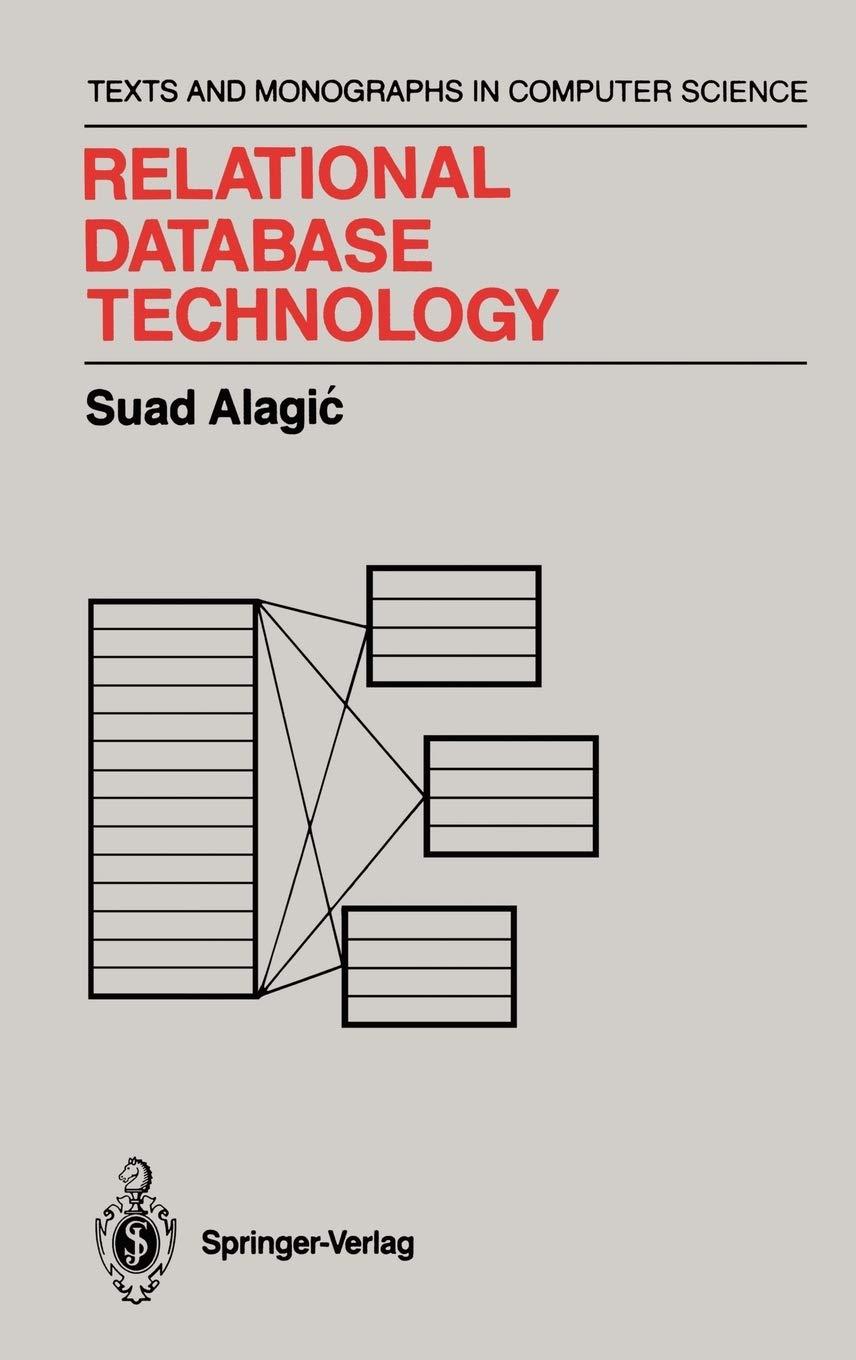Question
Part0.java is a sample program that reads data one line at a time from some input source and writes data to an output destination. You
Part0.java is a sample program that reads data one line at a time from some input source and writes data to an output destination. You should use this as a basis for code.
for PART 1: Read the input one line at a time and write each line to the output if it is not a duplicate of some previous input line. Take special care so that a file with a lot of duplicate lines does not use more memory than what is required for the number of unique lines. for PART 2: Read each of the lines of the input and output them in sorted order. Duplicate lines should be printed only once. Take special care so that a file with a lot of duplicate lines does not use more memory than what is required for the number of unique lines.
PART 1:
package comp2402a1;
import java.io.BufferedReader;
import java.io.FileReader;
import java.io.FileWriter;
import java.io.IOException;
import java.io.InputStreamReader;
import java.io.PrintWriter;
public class Part1 {
/**
* Your code goes here - see Part0 for an example
* @param r the reader to read from
* @param w the writer to write to
* @throws IOException
*/
public static void doIt(BufferedReader r, PrintWriter w) throws IOException {
// Your code goes here - see Part0 for an example
}
/**
* The driver. Open a BufferedReader and a PrintWriter, either from System.in
* and System.out or from filenames specified on the command line, then call doIt.
* @param args
*/
public static void main(String[] args) {
try {
BufferedReader r;
PrintWriter w;
if (args.length == 0) {
r = new BufferedReader(new InputStreamReader(System.in));
w = new PrintWriter(System.out);
} else if (args.length == 1) {
r = new BufferedReader(new FileReader(args[0]));
w = new PrintWriter(System.out);
} else {
r = new BufferedReader(new FileReader(args[0]));
w = new PrintWriter(new FileWriter(args[1]));
}
long start = System.nanoTime();
doIt(r, w);
w.flush();
long stop = System.nanoTime();
System.out.println("Execution time: " + 10e-9 * (stop-start));
} catch (IOException e) {
System.err.println(e);
System.exit(-1);
}
}
}
PART 2
package comp2402a1;
import java.io.BufferedReader;
import java.io.FileReader;
import java.io.FileWriter;
import java.io.IOException;
import java.io.InputStreamReader;
import java.io.PrintWriter;
public class Part2 {
/**
* Your code goes here - see Part0 for an example
* @param r the reader to read from
* @param w the writer to write to
* @throws IOException
*/
public static void doIt(BufferedReader r, PrintWriter w) throws IOException {
// Your code goes here - see Part0 for an example
}
/**
* The driver. Open a BufferedReader and a PrintWriter, either from System.in
* and System.out or from filenames specified on the command line, then call doIt.
* @param args
*/
public static void main(String[] args) {
try {
BufferedReader r;
PrintWriter w;
if (args.length == 0) {
r = new BufferedReader(new InputStreamReader(System.in));
w = new PrintWriter(System.out);
} else if (args.length == 1) {
r = new BufferedReader(new FileReader(args[0]));
w = new PrintWriter(System.out);
} else {
r = new BufferedReader(new FileReader(args[0]));
w = new PrintWriter(new FileWriter(args[1]));
}
long start = System.nanoTime();
doIt(r, w);
w.flush();
long stop = System.nanoTime();
System.out.println("Execution time: " + 10e-9 * (stop-start));
} catch (IOException e) {
System.err.println(e);
System.exit(-1);
}
}
}
package comp2402a1;
import java.io.BufferedReader;
import java.io.FileReader;
import java.io.FileWriter;
import java.io.IOException;
import java.io.InputStreamReader;
import java.io.PrintWriter;
import java.util.HashSet;
import java.util.Iterator;
import java.util.Set;
PART 0
public class Part0 {
/**
* Read lines one at a time from r. After reading all lines, output
* all lines to w, outputting duplicate lines only once. Note: the order
* of the output is unspecified and may have nothing to do with the order
* that lines appear in r.
* @param r the reader to read from
* @param w the writer to write to
* @throws IOException
*/
public static void doIt(BufferedReader r, PrintWriter w) throws IOException {
Set
for (String line = r.readLine(); line != null; line = r.readLine()) {
s.add(line);
}
for (String text : s) {
w.println(text);
}
}
/**
* The driver. Open a BufferedReader and a PrintWriter, either from System.in
* and System.out or from filenames specified on the command line, then call doIt.
* @param args
*/
public static void main(String[] args) {
try {
BufferedReader r;
PrintWriter w;
if (args.length == 0) {
r = new BufferedReader(new InputStreamReader(System.in));
w = new PrintWriter(System.out);
} else if (args.length == 1) {
r = new BufferedReader(new FileReader(args[0]));
w = new PrintWriter(System.out);
} else {
r = new BufferedReader(new FileReader(args[0]));
w = new PrintWriter(new FileWriter(args[1]));
}
long start = System.nanoTime();
doIt(r, w);
w.flush();
long stop = System.nanoTime();
System.out.println("Execution time: " + 10e-9 * (stop-start));
} catch (IOException e) {
System.err.println(e);
System.exit(-1);
}
}
}
Step by Step Solution
There are 3 Steps involved in it
Step: 1

Get Instant Access to Expert-Tailored Solutions
See step-by-step solutions with expert insights and AI powered tools for academic success
Step: 2

Step: 3

Ace Your Homework with AI
Get the answers you need in no time with our AI-driven, step-by-step assistance
Get Started


